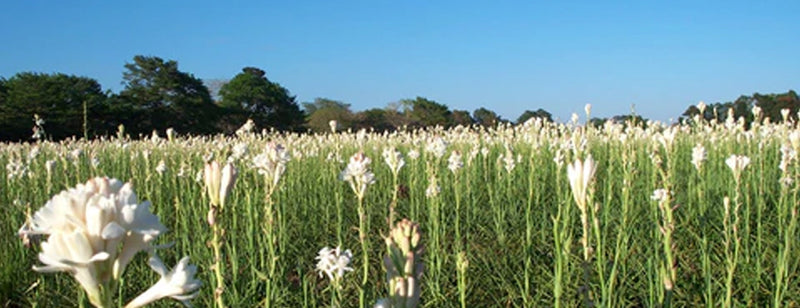Tuberose is a perennial plant of the asparagus family (Asparagaceae), cultivated for its fragrant flowers.
Although the botanical name still commonly use is Polianthes tuberosa, more recent genetic studies have confirmed that polianthes are in fact of the agave genus, so the correct new botanical name is now Agave amica.
The tuberose has long bright green leaves clustered at the base and smaller clasping leaves along the stem. The fragrant waxy white flowers are borne in a cluster at the tip of the stem and bloom at night. The roots are fleshy and tuberous.
Tuberose is native to Mexico but the popularity of their fragrant flowers means their cultivation spread to many tropical and temperate countries around the World.
It is said that Louis the XIV of France was very fond of their scent and had them planted around the gardens of his estates, in particular at the Trianon. It later inspired a perfume called Bouquet du Trianon which was developed in the XVIII century and was a favourite of Queen Marie Antoinette.
Cultivated widely in Grasse - the capital of perfume making - throughout the XVIII century, these precious flowers were initially extracted using the old technique of enfleurage which was replaced by a more modern 2 steps solvent extraction to obtain the absolute of tuberose.
Southern India (Mysore in particular) is now the main growing area where the flowers are either extracted for perfumes or used as fragrant garlands for weddings or other celebrations.
Fragrance: the main use for tuberose is for its intoxicating scent, described as a creamy floral scent with a coconut and honey facet and sweet undertones. Tuberose is one of the most expensive raw materials in perfumery, along with orris butter and rose essence.
Aromatherapy: considered a relaxing and sensual scent, it is recommended as an aphrodisiac, to fight impotence and frigidity (375 Essential Oils and Hydrosols, Jeanne Rose, Berkeley, USA, 1999).













